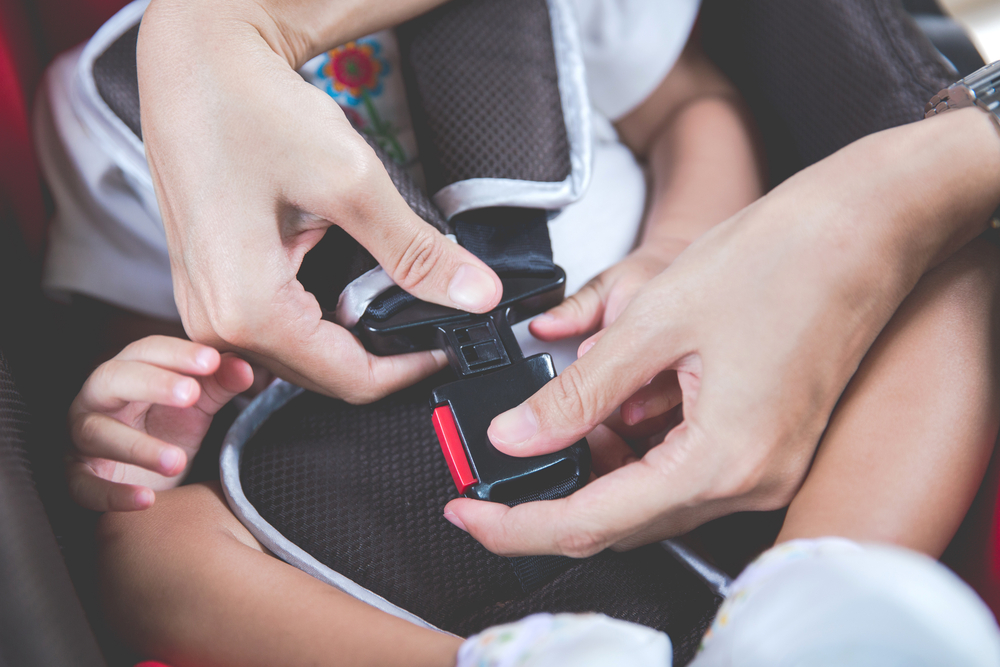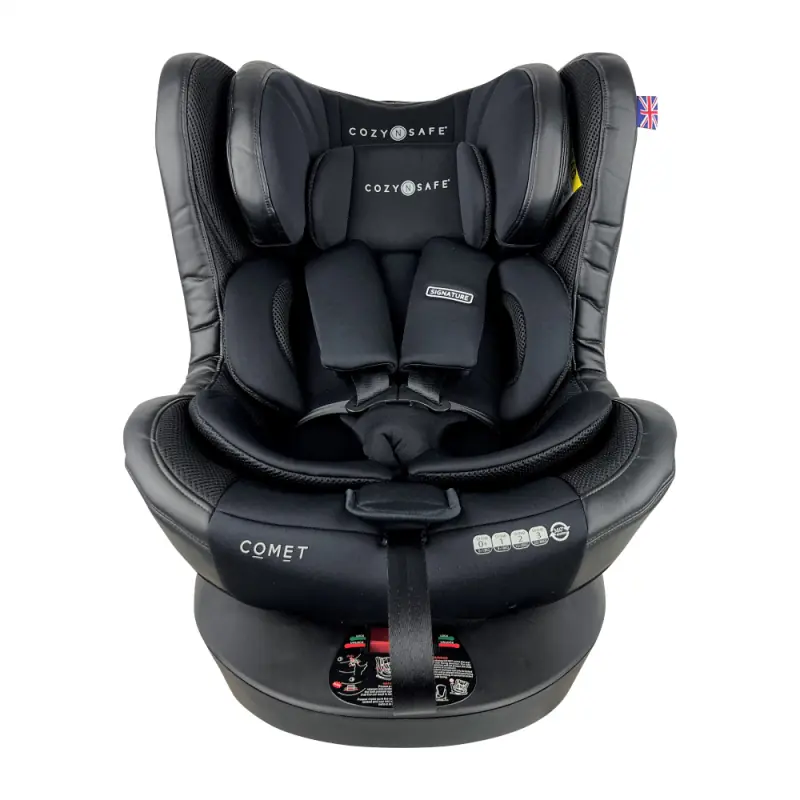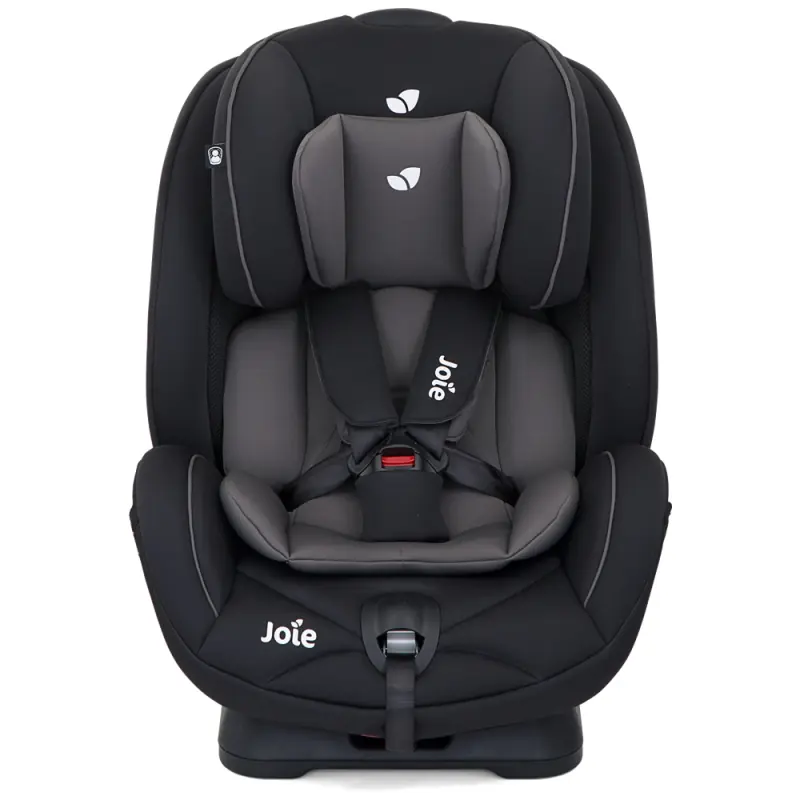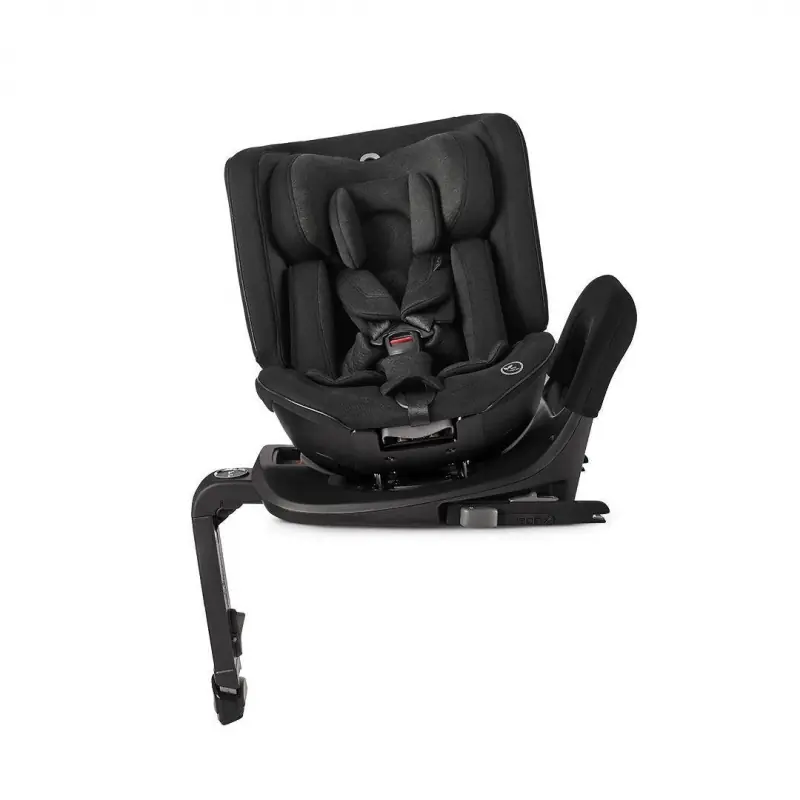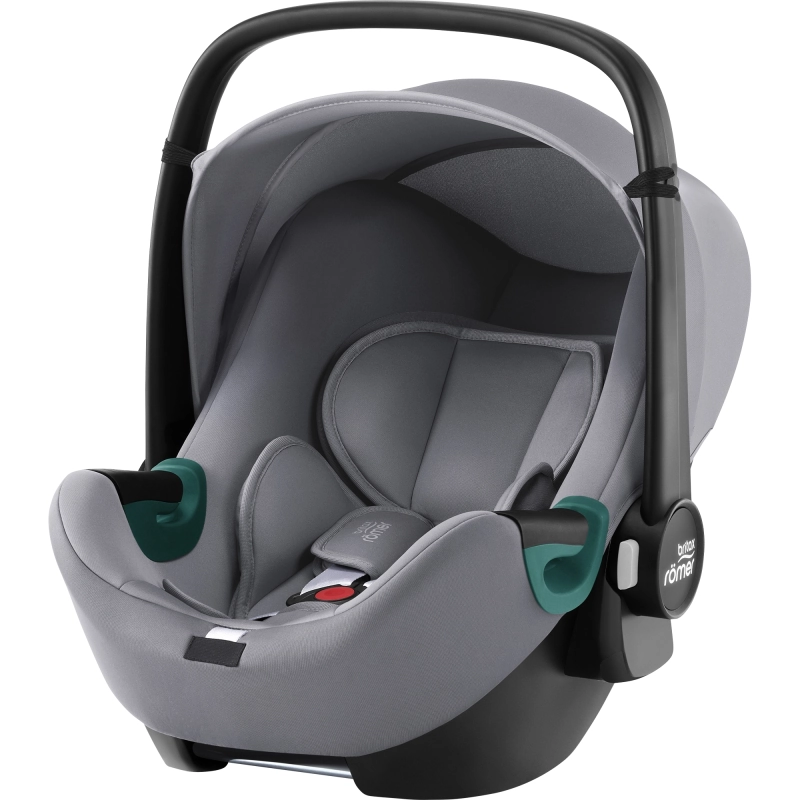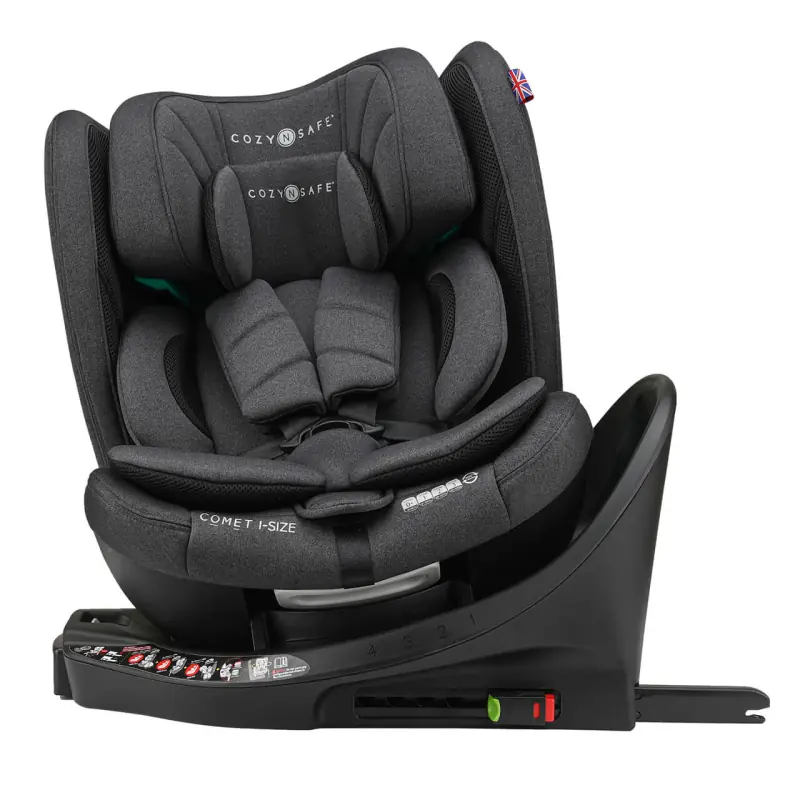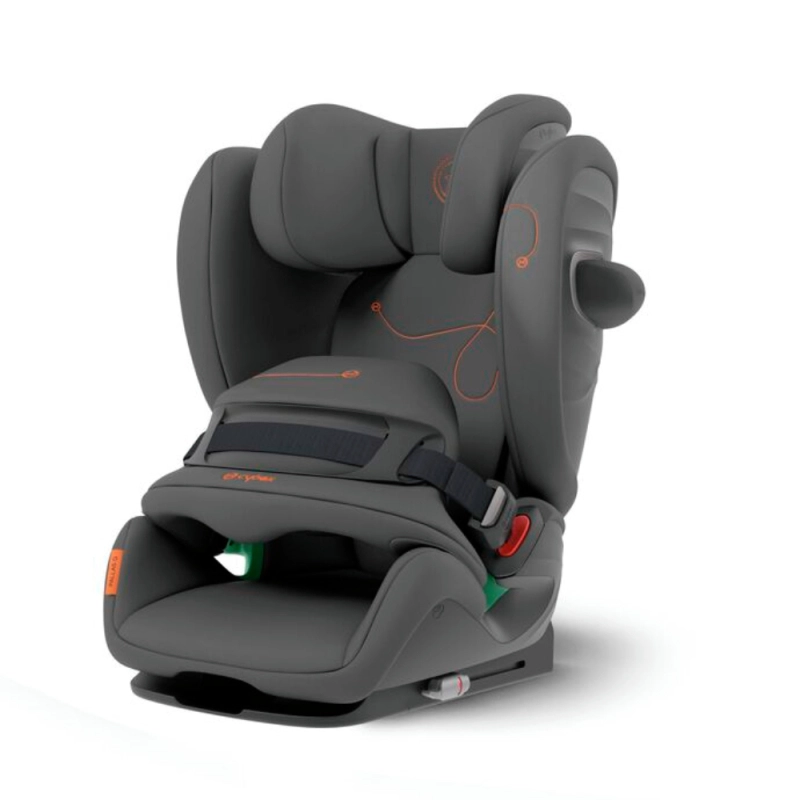At Kiddies Kingdom, we choose all products within our collections with safety in mind. Considering that a properly fitted car set can reduce the risk of injury by as much as 82% for children, it will come as no surprise that this is a category we pay close attention to.
Whether you are a new parent or a seasoned pro, finding the perfect car seat can be complex. With a world of fixing methods, different product styles and legal requirements that await you on the buying journey, we understand the pressure attached to finding the ideal car seat. In this article, we will share our expertise and insights to support you in securing a perfect car seat for your requirements.
Why Is Choosing the Right Car Seat Important?
Before we step into the vast world of car seat options, we wanted to start with some insights about why car seats are essential. Top-quality car seats have been designed with safety and secure fixing in mind. They are designed to hold a child securely so that if a road traffic accident does occur, the risk of injury should be much lower.
Car seats are also essential for keeping a child in place whilst travelling. By eliminating the chance of them slipping out of place, it ensures they are protected at all times. This also improves travel safety for the driver as they can have peace of mind in knowing that the young passenger is out of harm’s way whilst they focus on the road. This factor is even more vital when selecting newborn car seats as a quality car seat will maintain the correct posture. This means supporting the head, neck and spine to eliminate the chance of bodily damage occurring during the earliest growth phases.
Choosing the right car seat is not just crucial for the above-outlined points, but also due to the legal necessities. Car seats are a preferred method of keeping children safe when travelling. However, car seats are a legal requirement in the UK, so adhering to the rules can save you in many ways. The rules are that children must use a car seat until they are 12 or 135 centimetres tall, whichever comes first. The law specifies that a car seat can be chosen based on a child’s height or weight. Click the link to access our parent’s guide to car seat regulations, which explains this information in more detail.
What is i-Size?
There’s also some terminology you will need to become an expert when choosing the right car seat. A common term you will see a lot is i-Size. i-Size is part of the UN regulation standard for ECE R129 that specifies all car seats must have an Isofix system. This allows car seats to be attached directly to a vehicle. This is usually the norm for new cars, but some older models will need additional attachments or frames to be installed before a car seat can be used.
I-Size aims to ensure that car seats fit more safely and securely. Safety testing has also been more extensive and successful, with models that meet these needs and offer better protection in case of an accident. The three main changes within this standard compared to the previous version are as follows:
- All seats are chosen and specified based on the child’s height and weight.
- That re-facing model is used until the child is 15 months of age to prevent any injuries from occurring due to inadequate support.
- The standard also includes a side impact test, which was not previously covered. This ensures that should side-on collisions take place, the seat is still going to remain firmly in position.
What Types of Car Seats Are Available?
One of the reasons that selecting a car seat can be overwhelming is the different models available. That was one thing we wanted to take the guessing work out of when people visited our website. Therefore, when you visit our car seats category, you will see we have divided products into nine categories sorted by age.
The main types of available car seats are broken down by age, size and weight. These can be grouped in the following terms:
Baby car seats (Up to 15 months or 85cm in height)
Seats within this bracket are rear-facing, usually include a carry handle and are typically compatible with pushchairs to allow easy transportation of an infant. They have also been designed for enhanced support, so car seats within this category include more interior padding and restraints. Below are a few examples of products that we offer that are ideal for babies:
Toddler car seats (Up to 4 years and the max height of 150 cm if applicable)
Children can forward-face in the car from around 15 months, so toddler seats reflect this functionality. Depending on the model selected, you may have a seat that offers both orientations or need to select different ones for each need. An upright position characterises toddler car seats, functionality to swivel/rotate, more adjustability for harnesses, and can even be converted to a booster seat with certain models. Here are a few products we offer that would be ideal for this age range:
Child car seats (Up to 12 years or 150cm height)
As we have already established, car seats are a legal requirement in the UK until the above parameters are met. Child car seats are designed to last for a more extended amount of time than the models to account for the most significant period of growth. Therefore, models usually contain features such as high backs, adjustable headrests and widths, and compatibility with seat belts as the primary form of safety. If you are looking for a car seat that fits within this category, the below models are ideal:
Choosing the Right Car Seat:
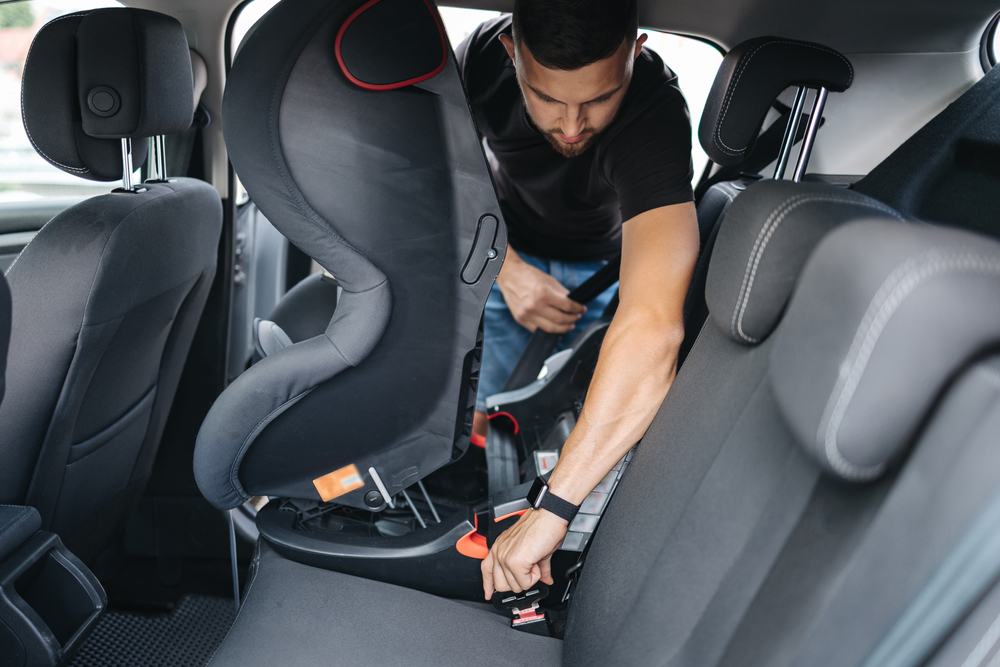
Now that you know what types of car seats are available and the importance of selecting the right one, we have gathered a few steps to guide you through the process.
Step One – Collate the Relevant Information Before Buying
Firstly, you should create your own product specification so that buying a car seat is almost a tick-box exercise. Arming yourself with the right knowledge not only makes the shopping experience much easier but should eliminate any onward worry that parents can experience when wondering if their chosen car seat is fit for purpose. This information is as follows:
- What is the child’s age, weight and height? As we have covered above, each of these factors brings its own legal requirements so knowing the correct model to look for is vital.
- What vehicle(s) will the seat need to be used in? This point is important as certain cars may not offer all fitting methods. Furthermore, you want to ensure it’s simple to move the seat between vehicles if required.
- What budget is available, and how long do you hope the seat will last? Some models will only be suitable for certain periods whereas others can grow and adjust as your child develops.
Step Two – Narrow Down a Shortlist and Do Your Homework
Buying a car seat is a significant investment not just financially but also in your child’s safety. It may well happen that you find a standout product instantly and want to proceed with that. However, as is the case for many parents, spending some time looking at a shortlist of products is a good idea.
You should compare the features versus your specification needs from step one to see which best suits your needs. The reason is that safety is never something you should compromise on, and the best way to achieve peace of mind is to know the product is perfect for your requirements. It’s also good to read reviews or speak to friends and family who may have used car seats to see what one they recommend. When exploring our collection of car seats, you will notice a range of customer reviews and handy questions answered within the listings as we aim to simplify the process.
Step Three – Ensure the Car Seat Is Correctly Installed Using the Professional Guidance
Once you have secured the best car seat for your needs, it’s also important to round up the experience by getting professional advice on fitting the model correctly. We have published an article about how to correctly fit a car seat, a handy resource many parents have used to enhance road safety.
What Are Some of the Other Requires To Consider With Car Seats?
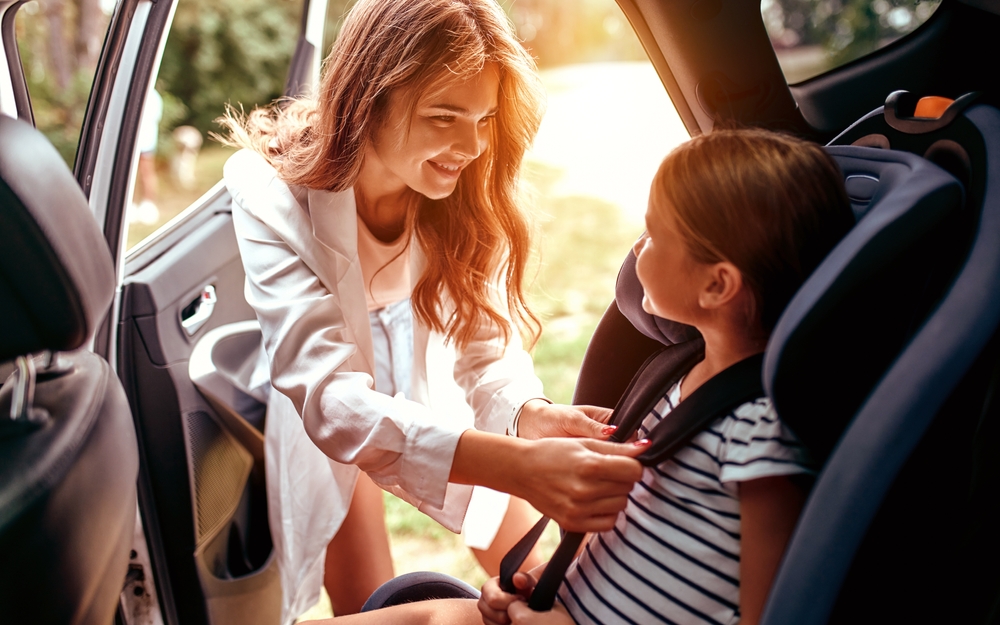
- Car seats should never be fitted in a passenger seat when an active airbag is used. This could lead to severe injuries should it be deployed.
- The car seat should always be tested for security before any journey as there is always a chance that if knocked around, it could become slightly looser. However, with the correct Isofix fittings, this can be eliminated as a potential issue due to the robust testing.
- Manufacturers are no longer allowed to produce backless booster seats for children that weigh less than 22 kg or are shorter than 125 cm. Be sure to check that the model you select is still allowed if you decide to shop secondhand.
- Car seats must always be used, even for short journeys.
Why Choose Kiddies Kingdom?
At Kiddies Kingdom, we specialise in supplying quality products for children. From car seats to toys and gifts, our website features curated collections designed to take the guessing work away from buying the best products.
When choosing a car seat, we understand the significance of the purchase. As well as wanting to guarantee safety, it’s also important to ensure budget needs are met as, let’s face it, children are expensive! By only supplying quality accessories, we have made it our aim to ensure that parents have a place to shop that has already done the groundwork for them.
Our car seats include safety advice and clear specifications and are supported by an expert team who can answer any questions. Once armed with the knowledge in this article and our extensive collection of car seats, selecting your perfect model is a breeze.
Do you still have a query? Contact our team today.

